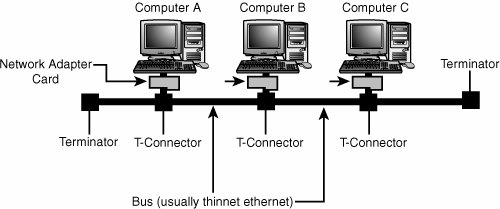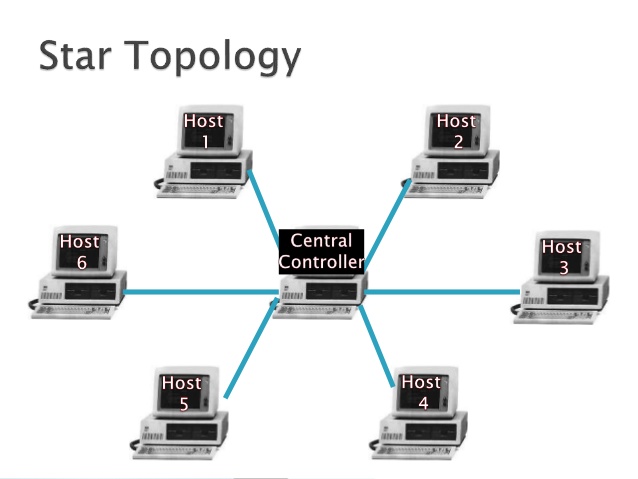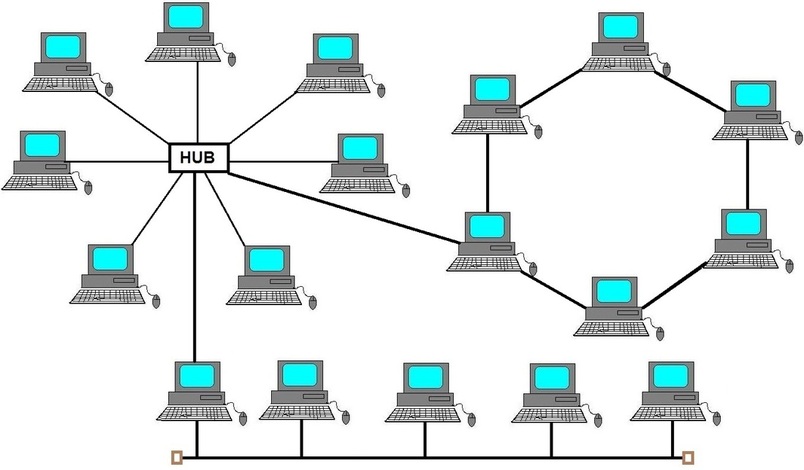 |
|||
| ARCHITECTURE |
TOPOLOGY |
BASIC CONCEPT |
|
TOPOLOGY
A network topology is the arrangement of a network, including its nodes and connecting lines. There are two ways of defining network geometry: the physical topology and the logical (or signal) topology.
The physical topology of a network is the actual geometric layout of workstations. There are several common physical topologies, as described below and as shown in the illustration.
Bus topology

In the bus network topology, every workstation is connected to a main cable called the bus. Therefore, in effect, each workstation is directly connected to every other workstation in the network.
Star Topology

In the star network topology, there is a central computer or server to which all the workstations are directly connected. Every workstation is indirectly connected to every other through the central computer.
Ring Topology

In the ring network topology, the workstations are connected in a closed loop configuration. Adjacent pairs of workstations are directly connected. Other pairs of workstations are indirectly connected, the data passing through one or more intermediate nodes.
If a Token Ring protocol is used in a star or ring topology, the signal travels in only one direction, carried by a so-called token from node to node.

Network Topology Hybrid